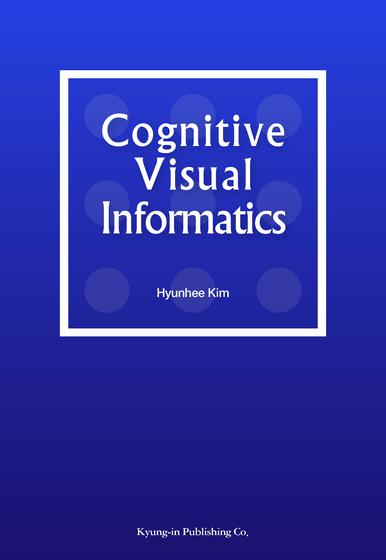- Cognitive Visual Informatics
- 22,000원
- 22,000원
- 판매중
- 경인문화사
- 종이 표지
- 152*224mm(A5신)
- 288쪽
- 2018년 2월 28일
- 9788949947266
- 책 소개
- Cognitive visual informatics is an interdisciplinary study of how humans organize, seek, store, and retrieve visual information. The practice of cognitive visual informatics research requires sophisticated theories, information technologies, and neurophysiological methods to design a natural user interface, manage information, and provide customized information services to users.
The book introduces theories and technologies that are applied to model and process visual information for this emerging field at the intersection of information science, library science, computer science, and cognitive neuroscience, which combines the research techniques of cognitive psychology with neuroscience techniques,such as electroencephalography/event-related potential (EEG/ERP), to assess the structure and function of the brain. With the rise of cognitive
neuroscience, many people with no previous experience in electrophysiology began setting up their own ERP labs. This was an important trend, because these researchers brought considerable expertise from other areas of science and began applying ERPs to a broader range of issues. I was fortunate to be involved in EEG/ERP projects, which were supported by the National Research Foundation of Korea. My goal in writing this book was to summarize research results on cognitive visual informatics that were obtained from the projects.
The book seems to be different from other information science books in terms of applying neuroscience, and cognitive science to information science field. The volume is organized so as first to explain basic concepts and then to illustrate them with examples and case studies. Hence, the book is useful for researchers, students, and practitioners of information science and its areas of application who want to know the new trends and applications in this field.
- 목차
- Cognitive visual informatics is an interdisciplinary study of how humans organize, seek, store, and retrieve visual information. The practice of cognitive visual informatics research requires sophisticated theories, information technologies, and neurophysiological methods to design a natural user interface, manage information, and provide customized information services to users.
The book introduces theories and technologies that are applied to model and process visual information for this emerging field at the intersection of information science, library science, computer science, and cognitive neuroscience, which combines the research techniques of cognitive psychology with neuroscience techniques,such as electroencephalography/event-related potential (EEG/ERP), to assess the structure and function of the brain. With the rise of cognitive
neuroscience, many people with no previous experience in electrophysiology began setting up their own ERP labs. This was an important trend, because these researchers brought considerable expertise from other areas of science and began applying ERPs to a broader range of issues. I was fortunate to be involved in EEG/ERP projects, which were supported by the National Research Foundation of Korea. My goal in writing this book was to summarize research results on cognitive visual informatics that were obtained from the projects.
The book seems to be different from other information science books in terms of applying neuroscience, and cognitive science to information science field. The volume is organized so as first to explain basic concepts and then to illustrate them with examples and case studies. Hence, the book is useful for researchers, students, and practitioners of information science and its areas of application who want to know the new trends and applications in this field.






